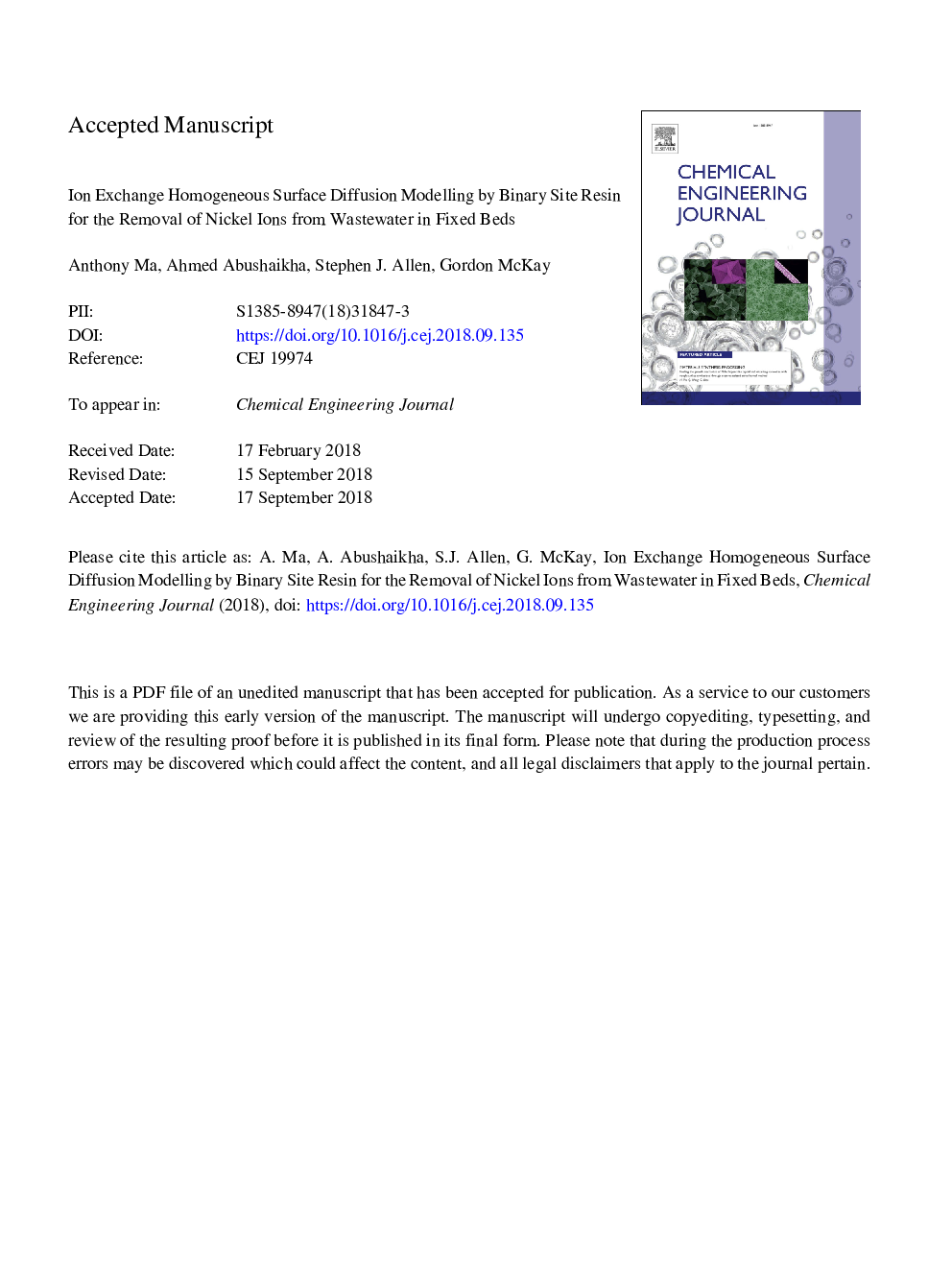| Article ID | Journal | Published Year | Pages | File Type |
|---|---|---|---|---|
| 11016638 | Chemical Engineering Journal | 2019 | 41 Pages |
Abstract
The presence of toxic heavy metals in wastewater is a continuing threat to both the environment and living organisms. The present study investigates the ion-exchange potential of a dual-exchanged (Na+/H+) chelating resin to remove nickel ions from wastewater in a fixed bed column ion exchanger. The resin contains iminodiacetic acid (IDA) functional groups that can lead to the capture of heavy metal ions, provided that the pH condition and ratio of Na+: H+ are appropriate. Too much Na+ results in precipitation of nickel hydroxide, resulting in clogging of the ion exchange columns, while too much H+ in the solution leads to competitive protonation, reducing the uptake of Ni2+ ions. The experimental work has been supported by modelling results using a new film-homogeneous surface diffusion model (HSDM) to simulate the fixed bed breakthrough curves for the two exchange processes - assigned 1 and 2. The best fit model simulation curves were obtained by optimizing the overall external diffusion mass transfer coefficient kf (=5.41â¯Ãâ¯10â3â¯cmsâ1), the surface diffusivity Ds (Ds1â¯=â¯224â¯Ãâ¯10â7cm2sâ1 for 2Na+/Ni2+ exchange; and, Ds2â¯=â¯3.60â¯Ãâ¯10â10 cm2sâ1 for 2H+/Ni2+ exchange) and the equilibrium constant KRP (KRP1â¯=â¯351â¯dm3/g for 2Na+/Ni2+ exchange; and KRP2â¯=â¯781â¯dm3/g for 2H+/Ni2+ exchange) until a good fit was obtained between the model and experimental data. Optimisation was achieved by employing the downhill simplex method and performing a multidimensional minimization of the objective function, i.e. minimizing the SSE between the experimental data and the model prediction.
Related Topics
Physical Sciences and Engineering
Chemical Engineering
Chemical Engineering (General)
Authors
Anthony Ma, Ahmad Abushaikha, Stephen J. Allen, Gordon McKay,
